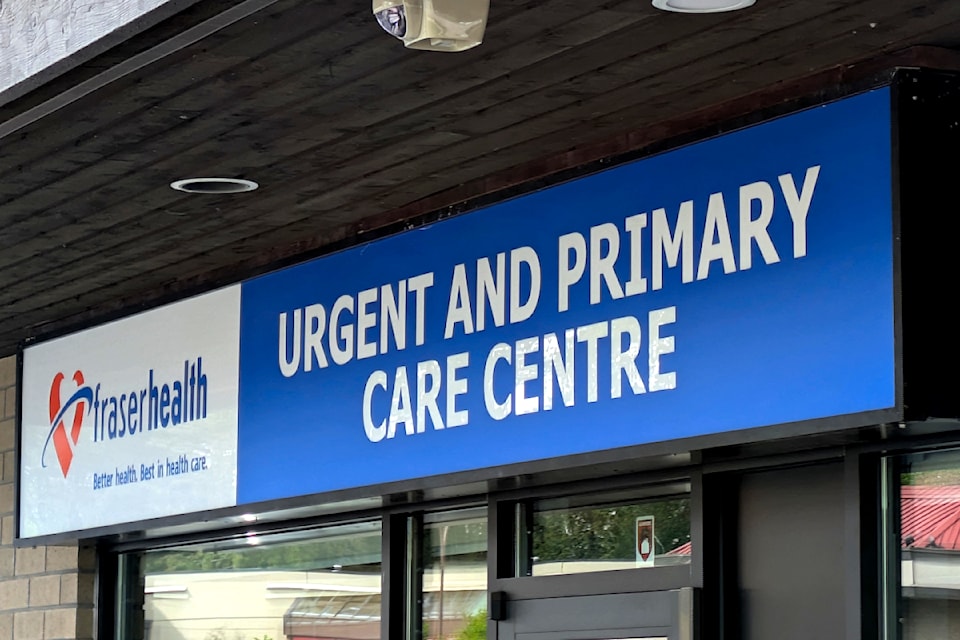B.C.'s NDP government has released its first report on community-based primary care as part of a deal to get legislative support from the B.C. Greens.
But the Green Party is not entirely pleased, saying that while the report provides valuable insights, it doesn't address patient complexity, satisfaction or health outcomes. A news release from the party calls that lack of information a "critical gap."
The report looked at team-based care, such as urgent and primary care centres and community health centres, then at human resources and levels of patient "attachment," which is a documented existence of a clear ongoing relationship between a patient and a health-care provider or group of providers.
"This report is an important first step in our work to make the most of existing resources, identify ongoing challenges and better plan for the future," Health Minister Josie Osborne said in a statement accompanying the report's release on Thursday, Aug. 7
Urgent primary care centres
In 2018, the Health Ministry launched its primary care strategy as a response to "escalating pressures within the primary care system." This involved the creation of new centres to provide same-day urgent care and take pressure off hospital emergency rooms.
The first urgent and primary care centre opened in 2018.
Since opening, the report says the centres have provided more than 3.4 million patient visits. Nearly 900,000 of those visits were between April 1, 2024 and March 31, 2025.
As of March 31, the ministry has opened 41 urgent primary care centres throughout the province: 10 in Fraser Health, 11 in Interior Health, two in Northern Health, seven in Vancouver Coastal Health and 11 in Island Health. The goal is to open 50.
Nineteen of the centres also provide long-term primary care, connecting 27,967 patients with health-care providers as of March 31.
The report notes that while attachment to primary care providers is increasing throughout B.C., there are still barriers to accessing care, such as in scheduling timely appointments.
Community health centres
Community health centres, meanwhile, are meant to improve access to both long-term and one-off appointments for priority populations. That includes newcomers to Canada, 2SLGBTQIA+ communities and individuals facing mental health, substance use or other social barriers.
The report notes that "community health centre" is a common term used in health services, and there are an estimated 180 centres in the province, but fewer than half provide primary care services.
The province has funded 14 of these primary care community health centres since 2020, but only 12 are currently operating.
Ministry-funded centres were visited more than 124,000 times between April 1, 2024 and March 31, 2025.
As of March 31, more than 14,000 patients have been connected to health-care providers through these centres. The centres are only meeting 38 per cent of attachment targets on average, according to the report.
Primary care providers
There are a total of 5,292 family physicians and 636 nurse practitioners in B.C, the report says. The geographic spread of providers reflects population trends, and the majority of the providers are in metropolitan or large urban centres.
Fraser Health Authority has the most overall, with 1,554 family physicians and 161 nurse practitioners. Vancouver Coastal has the most nurse practitioners, with 180, but only has 1,478 family doctors. Vancouver Island has 994 family physicians and 141 nurse practitioners, Interior has 963 family physicians and 106 nurse practitioners, and Northern Health has 303 family physicians and 48 nurse practitioners.
Connecting British Columbians with health-care providers
Since the primary care strategy was launched in 2018, more than 750,000 British Columbians have been attached to a primary care provider, according to the report. The pace of this "significantly increased" in the 2023/24 fiscal year when a longitudinal family physician payment model was implemented.
The number of doctors coming into the system is also outpacing population growth. While B.C.'s population grew by 12 per cent from 2017 to 2023, the number of long-term family physicians increased by 18 per cent, nurse practitioners by 120 per cent, registered nurses by 15 per cent and allied health professionals by 22 per cent.
The province launched a patient attachment system in 2023. The system allowed the ministry, for the first time, to see who is connected to which provider and where.
Future reports to come
The report notes that it is "not a comprehensive performance assessment of the entire primary care system," but is instead an "initial step" to assess the province's primary care system.
Another report is expected in the fall to build on the data released Thursday.
The B.C. Greens say it will include expert and patient consultations, something this report lacked because it was developed internally and with limited input from providers.
But ultimately, B.C. Greens interim Leader Jeremy Valeriote said the "transparency and detail in this report mark an important step forward" for B.C.'s health-care system. He said it is "just the beginning."

